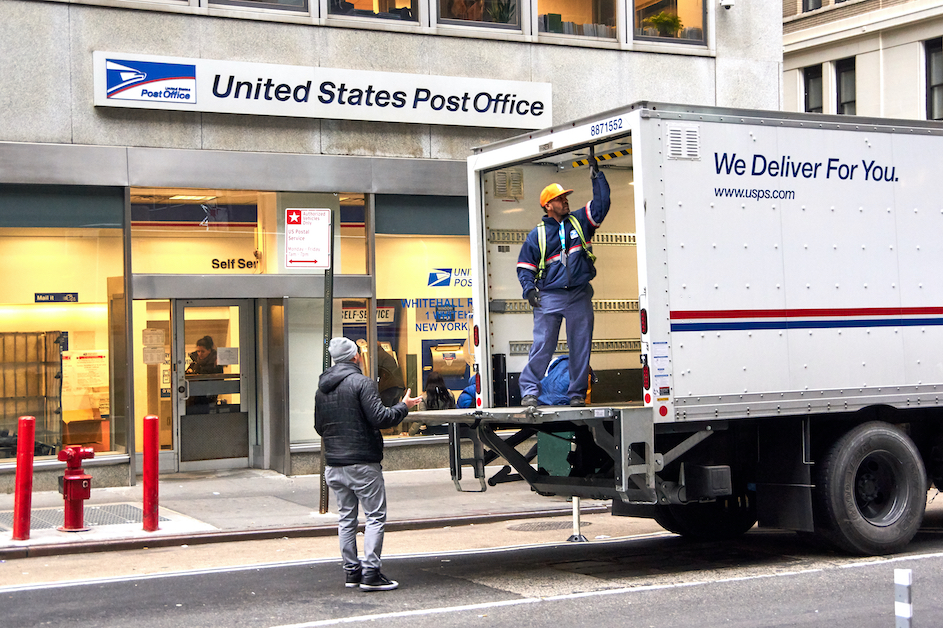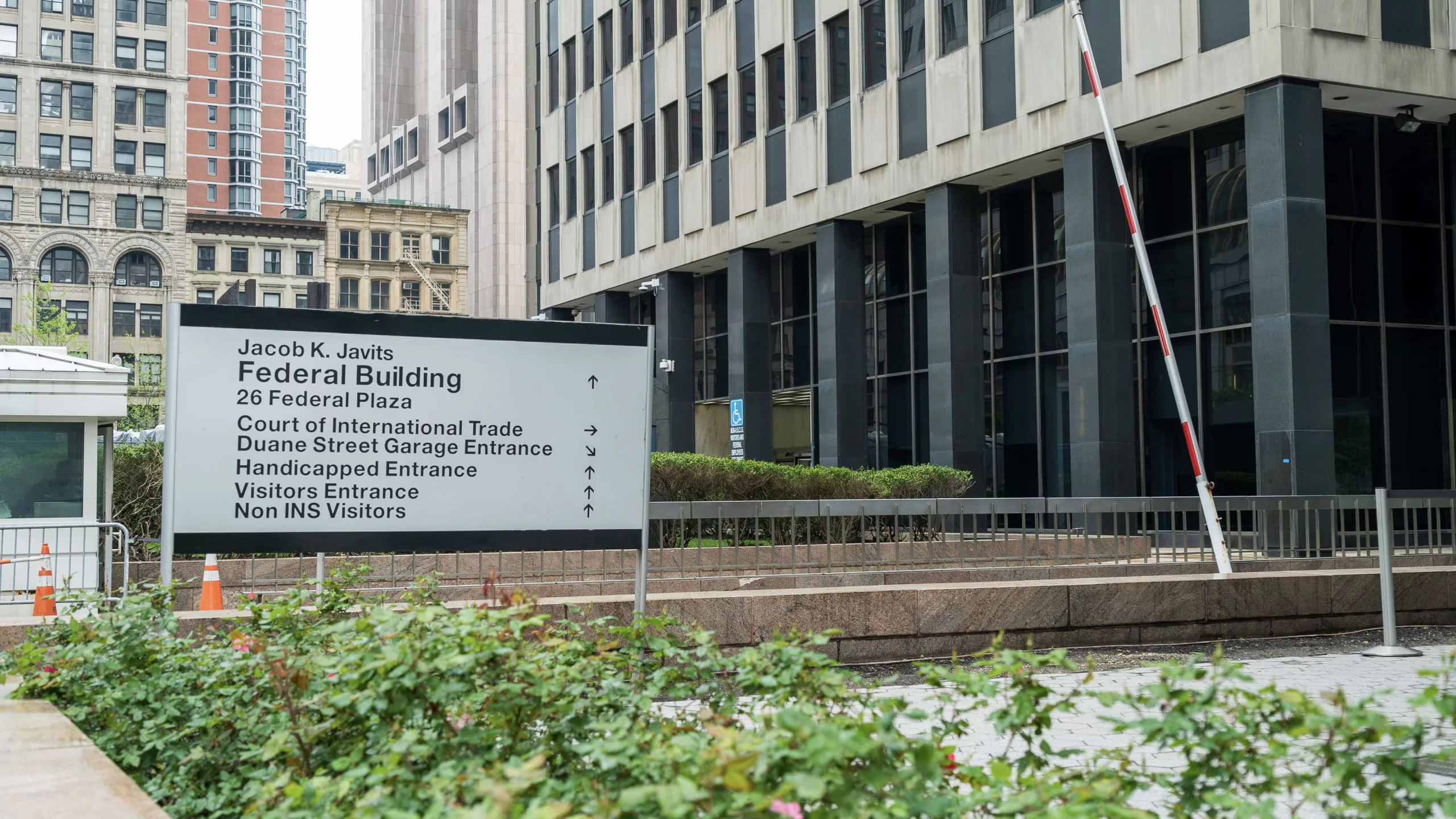The United States Postal Service is bracing for a deluge of mail-in ballots for the 2020 general election, while the agency is besieged by budget cuts and increasing delays in mail service. But delays in the postal service threaten to disrupt more than the election: the entire immigration system, which is highly dependent on mail courier services, is also at stake.
Each year the USPS processes nearly half of the mail in the entire world (142 billion pieces), according to the New Yorker. The agency employs nearly 25% of the federal workforce, and delivers paperwork, notices, visas, work authorizations, naturalization documents, and more, to the 47 million immigrants living in the U.S.
On August 19, 2020, Dominic Corso, President of the Local 443 American Postal Workers Union (located in Youngstown, Ohio) said the recent changes to the postal service have caused irreversible damage.
“It only takes a day or two for us to get to the point that we have hundreds of thousands of letters delayed. We are at a point where 150,000 pieces of mail a day have been delayed,” recounted reporter Taylor Haggerty from her interview with Corso on a Sound of Ideas radio episode.
Speaking in his American Federation of Government Employees (AFGE) union capacity, United States Citizenship and Immigration Services (USCIS) employee Kenneth Palinkas explained the ways in which the USPS and the work of USCIS are inextricably intertwined.
“It would be disastrous if they shut down the post office, our work and the USPS go hand in hand,” Palinkas said. “At one point, around 2012, they were contemplating putting USCIS offices in post offices… It would be like one-stop shopping, you don’t even have to mail your documents, just come to the post office and we’re there for you,” Palinkas recalled.
Palinkas has worked for USCIS since its founding in 2003. He has witnessed the agency undergo many changes in leadership, budget, and initiatives, including Transformation, a program created in 2006 dedicated to digitizing USCIS’s methods of processing immigration forms and filings. It is estimated at least $4 billion has gone into this initiative, which as Palinkas said, “has yielded not nearly what it should have by now.”
In 2015, The Washington Post reported that Transformation was originally budgeted at half a billion dollars and scheduled to be completed by 2013. Five years later, only 10 of close to 100 forms that can be completed online.
In 2003, at the Laguna Niguel, California USCIS center, a manager overburdened with immigration filings shredded 90,000 documents that included “American and foreign passports, applications for asylum, birth certificates and other documents supporting applications for citizenship, visas and work permits.”
More recently a USPS employee in Salt Lake City, Utah, Diana K. Molyneux, was arrested for the delay and destruction of thousands of immigration related pieces of mail since 2017. The Nevada Independent reported that by the time the Inspector General’s investigation had concluded, applicants had spent thousands of dollars re-applying, many had lost their jobs while waiting and DACA applicants have been unable to reapply.
New York City-based immigration attorney, Neena Dutta estimates that 90% of immigration filings are processed through mail and that even those that can be completed online often have to be supplemented by mailed-in documents.
Dutta has received incorrect and conflicting information regarding which forms can and cannot be processed online from USCIS representatives answering the agency’s 1-800 line, which is particularly concerning given it is the first point of contact for many people.
Immigration Attorney Matthew Hoppock, expressed similar frustrations with an inaccessible and complicated system. Hoppock’s law firm, based in Kansas City, Missouri focuses on asylum cases. A week ago, a client of Hoppock’s who applied for asylum in 2015 received their biometrics appointment notice the same day it was scheduled. The notice was postmarked August 1, 2020 but arrived on August 20, 2020. In order to reschedule the appointment, his client had to mail in a request for a new appointment and wait for USCIS to mail back the rescheduled appointment date, delaying the process by months.
Hoppock explained that two years ago USCIS disabled a system that scheduled InfoPass appointments online. An InfoPass appointment allows an applicant to talk to a USCIS representative about an issue they may be encountering with their forms.
“Now you have to mail in a request for an appointment and if you call USCIS number, the wait is in the hours. And, often when you reach someone they hang up on you or say you are not eligible for an InfoPass appointment,” Hoppock said. “They [ USCIS] have done things to actually limit the ability to alert somebody that something has happened.”
A missed biometrics appointment not only prolongs an already lengthy process, it also could threaten work authorization eligibility. Asylum seekers are granted work authorization while waiting for their case to be adjudicated, but these work permits can be revoked or not granted if there are delays in the applicant’s filing. A missed biometric appointment constitutes one of those delays.
Heather Prendergast, an immigration attorney based in Cleveland, Ohio reported that for a few weeks in 2019, a local immigration clerk refused to process filings without first receiving a copy of the USCIS receipt verifying that filing fees had been paid and received. Prendergast explained that the clerk’s actions violated the court’s manual, there are other ways to prove you have paid your filing fees, such as a copy of a check. However, instead, applicants had to wait until the USCIS received their mailed fee and mailed back a receipt. This can easily take over a month, Prendergast explained. With much persistence, she and others were able to resolve the issue, but other obstacles persist, all of which will be exacerbated by any further impediments to the postal service.
The implications of delayed mail can be consequential for those applying for affirmative benefits, such as green cards, but for those in removal proceedings, a missed appointment could mean a deportation notice in their absence, Prendergast explained.
Two weeks ago Prendergast received a pile of oath ceremony notices scheduled for the following week. In that stack of mail was a notice for a person who was not her client. Prendergast forwarded the notice to the correct address but suspects this person may have missed their ceremony. Another example of Prendergast shared was from four years ago, when one of her clients had been approved for a green card and was waiting for the documents to arrive in the mail. After several weeks passed, Prendergast contacted the local postmaster who wrote a letter to USCIS confirming that the documents had not been delivered. USCIS responded that this letter was not sufficient evidence.
Prendergast’s client was forced to reapply and submit their paperwork again, which as Prendergast explained, “was not only extremely frustrating and disheartening but also costly.” Her client had to pay approximately $1,500 in additional legal and government filing fees beyond what she had already paid for the original application.
The USCIS’s decision to increase filing fees beginning October 1, 2020 adds considerable financial stress to an already expensive process. The extra cost of mailing documents via FedEx or DHL is often not manageable for applicants spending upwards of $1,000 on filing and lawyer fees. And, even if it were affordable, there are some filings, such as green cards, that can only be sent via USPS because the address is USCIS’s P.O. Box in Texas.
USCIS adjudicates based on the date a filing is received, not the day it was postmarked, explained Dutta– leaving an applicant’s immigration status at the caprice of the postal service. Dutta worries that with the scheduled fee increase, there will be a surge in filings before October 1, adding to an already overwhelmed and backlogged system.
Nadia and Regina (pseudonyms) were married on January 10, 2017. Nadia, originally from Lebanon, applied for a marriage based green card within three months of their wedding date. A few weeks after applying, Nadia received notice that her application had been accepted and that the entire process would take no longer than 18 months.
For over a year Nadia and Regina checked their mail obsessively, hoping that each day would be the one that they would receive notice of their green card interview. They even signed up for USPS alerts — checking each morning began their everyday ritual.
Finally, they received a letter with their interview date: August 2, 2018. Over a year had elapsed since Nadia had filed the necessary paperwork.
“The interview went so well. We had all the documentation, but at the end the officer told us that the medical records I sent had expired since I applied over a year ago. So we asked her if we could go to the doctor that day, pay for new medical records and come back,” Nadia explained.
The officer told them no, they would have to wait to receive a letter from USCIS requesting the medical files and then send it in.
Another year and half passed and Nadia still had yet to receive a letter from USCIS requesting the updated medical records. Then, on March 16, 2020, Nadia received a letter from USCIS, but not the one she had been hoping for. “It said my green card had been rejected and I had 33 days to leave the country,” she said. USCIS had apparently sent the letter requesting further documentation (ie her medical records) that Nadia and Regina had been checking for each day since August 2018, but had never received, in February 2020.
“We called our neighbors, landlord, USPS, everyone. There was no record of this letter being sent or received,” Nadia claimed.
By the time Nadia received her green card rejection letter, seven days had passed since it’s postmarked date, leaving her 26 to fly home to Lebanon at the height of the pandemic or to find a lawyer to file a motion for reconsideration.
Nadia and Regina called over 20 lawyers, all of whom were unwilling to take on her case, before they finally reached Dutta.
Two weeks ago, Nadia received her green card. The only document the USCIS requested to process the application was her medical file from 2018. The request had apparently been sent but
“When we finally got the green card, we reread the letter at least 50 times just to make sure it was real. The crazy part is that we have been told our case wasn’t even the worst and we know that I was only able to get it because we hired a lawyer and a lot of people don’t have the money to do that,” Nadia said.
Speaking in her capacity as President of National Association of Immigration Judges (NAIJ), Ashley Tabbador, said: “The actual mailing of filing notices is part and parcel with the law. There are already problems with there being limited opportunities between being notified and making arrangements, any delay can have a severe impact.”
Tabbador is concerned that those impacted most by changes in the postal service are those who cannot afford representation and therefore are less likely to understand the system.
For example, many applicants who receive rejections do not understand that often this could just mean you have an issue with your paperwork. Dutta says that in her 16 years of practicing immigration law, she has never seen so many requests for further evidence. “And for the littlest things. Sometimes I will resubmit the same thing and it will be accepted the second time. I would much rather be working on my cases, then chasing mail. It’s a waste of their resources and ours,” she said.
An overwhelmed immigration system is not new, nor are Republican instigated threats to the USPS, but an agency that just narrowly bypassed an 75% staff furlough and is dependent on the postal service to function is a particularly precarious place to be in.














